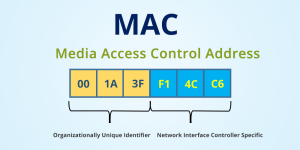Steganography: The Art of Hiding Messages in Plain Sight
Steganography is an ancient art that has been used for centuries to conceal messages within other messages or objects. It involves hiding a message in such a way that it is undetectable to anyone except the intended recipient. In modern times, steganography has found a new application in the digital world, where it is used to protect digital information from unauthorized access.
How Steganography Works
At its core, steganography is the practice of hiding a message within another message or file. This could mean hiding a secret message within an image, audio file, or even a video. Unlike encryption, which simply scrambles a message to make it unreadable, steganography ensures that the existence of the message remains unknown. The goal is to hide the message in such a way that it is invisible to anyone who is not the intended recipient.
Digital files have unused space, or “noise,” that can be manipulated without affecting the overall appearance or sound of the file. By inserting data into this unused space, steganography can hide a message within a file without altering its appearance or sound quality. For example, in an image file, steganography software can change the color of certain pixels so that they represent a binary code that is a secret message. Similarly, in an audio file, the amplitude of certain frequencies can be changed to represent a hidden message.
Applications of Steganography
Steganography has a variety of applications in today’s digital world. One of its most common uses is to protect sensitive information from unauthorized access. For example, a company might use steganography to hide confidential data within a seemingly innocent image file before sending it over an unsecured network. This way, even if an attacker intercepts the image file, they will not be able to read the hidden message.
Steganography is also used in digital watermarking, where a digital watermark is a unique identifier that is embedded in a digital file to prove its authenticity. A digital watermark can be hidden within a video or image file so that it is not visible to the naked eye, but can be detected by specialized software.
Steganography can also be used to evade censorship or to transmit information in countries with strict government regulations. For example, activists might use steganography to hide messages in seemingly innocent social media posts, so that they can communicate with each other without being detected by the authorities.
Limitations of Steganography
While steganography is an effective tool for hiding messages, it is not foolproof. There are ways for attackers to detect the existence of hidden messages, and advanced methods of steganalysis can even extract the hidden data from a file. For example, an attacker might use statistical analysis to look for anomalies in the data, which could indicate the presence of a hidden message.
Furthermore, steganography is only effective if the recipient knows how to extract the hidden message. If the recipient does not have access to the same steganography software that was used to hide the message, they will not be able to read it.
Certainly! Let’s delve deeper into steganography and explore some of its techniques, advantages, and limitations.
Techniques of Steganography
Steganography uses various techniques to conceal messages within files. Some common techniques include:
- Least Significant Bit (LSB) Method: This technique involves changing the least significant bit in each pixel of an image to represent a binary code. The changes are so subtle that they are almost imperceptible to the human eye, and the resulting image appears unchanged.
- Spread Spectrum Method: This technique involves spreading a message across a range of frequencies in an audio file. The message is encoded using a sequence of pseudo-random numbers, and the resulting audio file sounds like white noise.
- Text Steganography: This technique involves hiding a message within a text file by altering the formatting, spacing, or punctuation of the text. For example, the first letter of each word in a paragraph could be used to spell out a hidden message.
- Image Steganography: This technique involves hiding a message within an image file by altering the color or brightness of certain pixels. The changes are so small that they are not noticeable to the human eye.
Advantages of Steganography
Steganography has several advantages over other methods of secure communication, such as encryption. Some of the advantages include:
- Invisibility: Steganography ensures that the existence of the message remains unknown, making it difficult for an attacker to detect and intercept the message.
- Covertness: Steganography allows the sender to hide the message within an innocent-looking file, making it less likely to arouse suspicion.
- Resistance to Cryptanalysis: Steganography can be used in conjunction with encryption to provide an added layer of security. Even if an attacker intercepts the encrypted message, they will not be able to read the hidden message without knowing where to look.
Limitations of Steganography
While steganography is a powerful tool for secure communication, it has several limitations that must be considered. Some of the limitations include:
- Detection: There are ways for attackers to detect the existence of hidden messages, such as using statistical analysis or examining the file size for abnormalities.
- Compatibility: Steganography requires that both the sender and recipient use the same steganography software and technique to exchange messages. If the recipient does not have access to the same software, they will not be able to extract the hidden message.
- Capacity: The amount of data that can be hidden within a file is limited by the size of the file and the technique used. Some techniques, such as the LSB method, can only hide a small amount of data within an image file.









